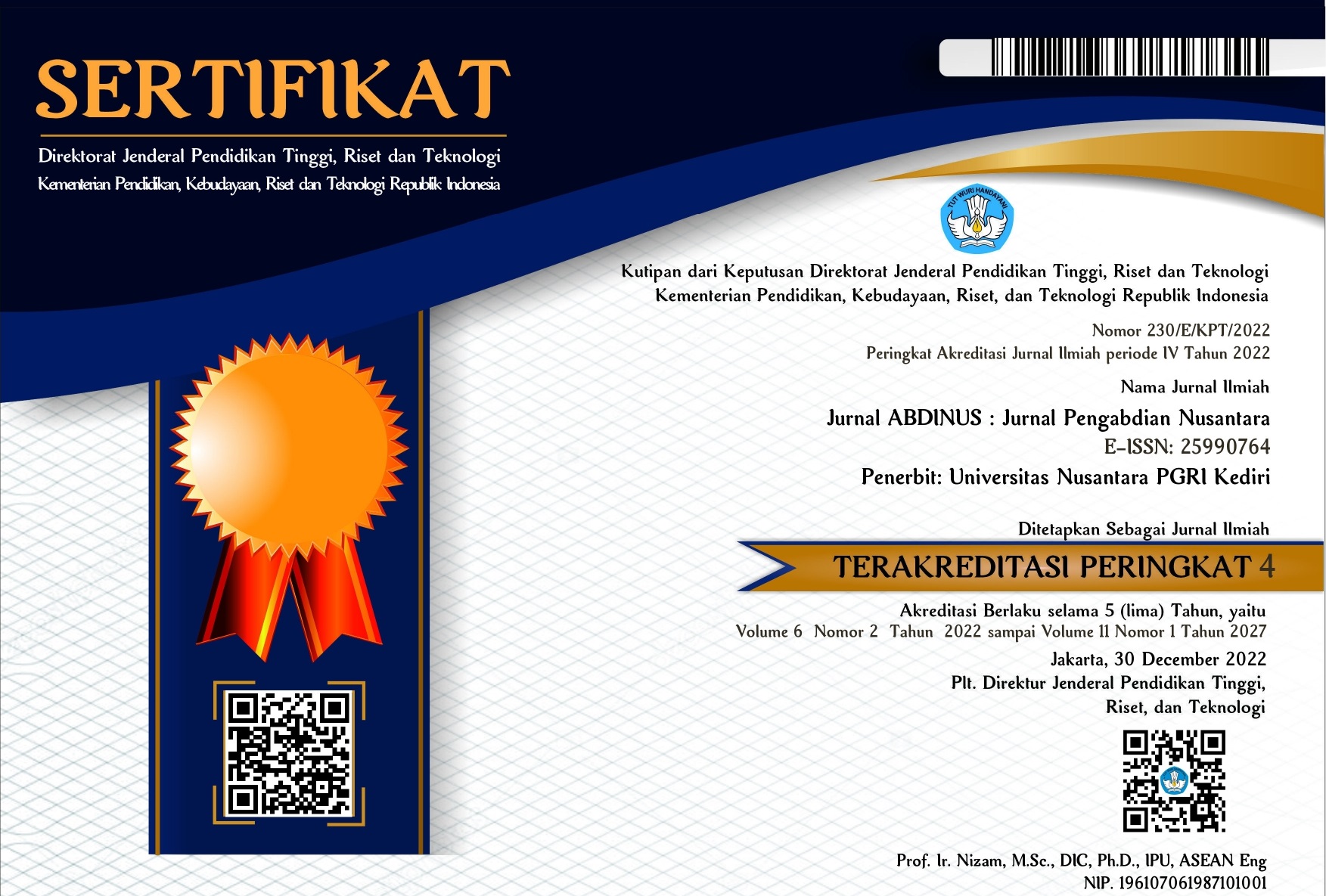Pendampingan Perancangan Sajian Khas pada Kawasan Wisata di Kecamatan Jangkar Kabupaten Situbondo
DOI:
https://doi.org/10.29407/ja.v7i2.18559Keywords:
Dishes, Sambal, Traditional, Participatory rural appraisalAbstract
Gadingan is a village in Jangkar – Situbondo. It has the potential natural resources known as Gadingan Mas which will be developed as a traditional culinary center, although the type of dishes that has the potential as special culinary delights is not yet known. The purpose of this community empowerment is to assistance Pokdarwis to identify and promoting the special traditional culinary. Participatory rural appraisal (PRA) is applied to encourage village communities to share with each other about the actual situation of the village and to determine development plans and actions. The identification results show that the dishes commonly served in local households are grilled fish, smoked fish, “nasi sodu”, and lamtoro coffee. Using the focus group discussion method, it was decided that Nasi Sodu and Lamtoro Coffee were presented as special culinary delights. A special culinary modification dish is in the form of serving “nasi sodu” with a touch of red and green. This color comes from the use of “sambal cengi” as an additional dish. The addition of this “sambal cengi”, in addition to providing a delicious taste to the “nasi sodu”, also provides a better perception for consumers.
Downloads
References
Andriani, nukeu. (2021). Peran Wisata Kuliner Sebagai Bentuk Pengembangan Citra Destinasi Kota Bandung (Culinary Tourism Role as a Form of Destination Image Development in Bandung). SSRN Electronic Journal. https://doi.org/10.2139/ssrn.3619822
Fiani, M., & Japarianto, E. (2012). Analisa Pengaruh Food Quality dan Brand Image Terhadap Keputusan Pembelian Roti Kecik Toko Roti Ganep’s di Kota Solo. Jurnal Manajemen Pemasaran, 1(1), 1–6.
Garber, L. L., Hyatt, E. M., & Nafees, L. (2016). The Effects of Food Color on Perceived Flavor: A Factorial Investigation in India. Journal of Food Products Marketing, 22(8), 930–948. https://doi.org/10.1080/10454446.2014.885864
Hoppu, U., Puputti, S., Aisala, H., Laaksonen, O., & Sandell, M. (2018). Individual differences in the perception of color solutions. Foods, 7(9). https://doi.org/10.3390/foods7090154
Putra, M. K. (2021). Gastronomy Tourism: Local Food and Sustainable Tourism Experience - Case Study Cirebon. Proceedings of the 1st NHI Tourism Forum (NTF 2019) - Enhancing Innovation in Gastronomic for Millennials, 19–29. https://doi.org/10.5220/0009196500190029
Titova, T., & Damyanov, C. (2015). Food Quality Evaluation According To Their Color Characteristics. Facta Universitatis, 14(1), 1–10.
Utami, S. (2018). Kuliner Sebagai Identitas Budaya: Perspektif Komunikasi Lintas Budaya. CoverAge: Journal of Strategic Communication , 8(2), 36–44.
Yeoman, I., & McMahon-Beatte, U. (2016). The future of food tourism. In Journal of Tourism Futures (Vol. 2, Issue 1, pp. 95–98). Emerald Group Publishing Ltd. https://doi.org/10.1108/JTF-12-2015-0051















